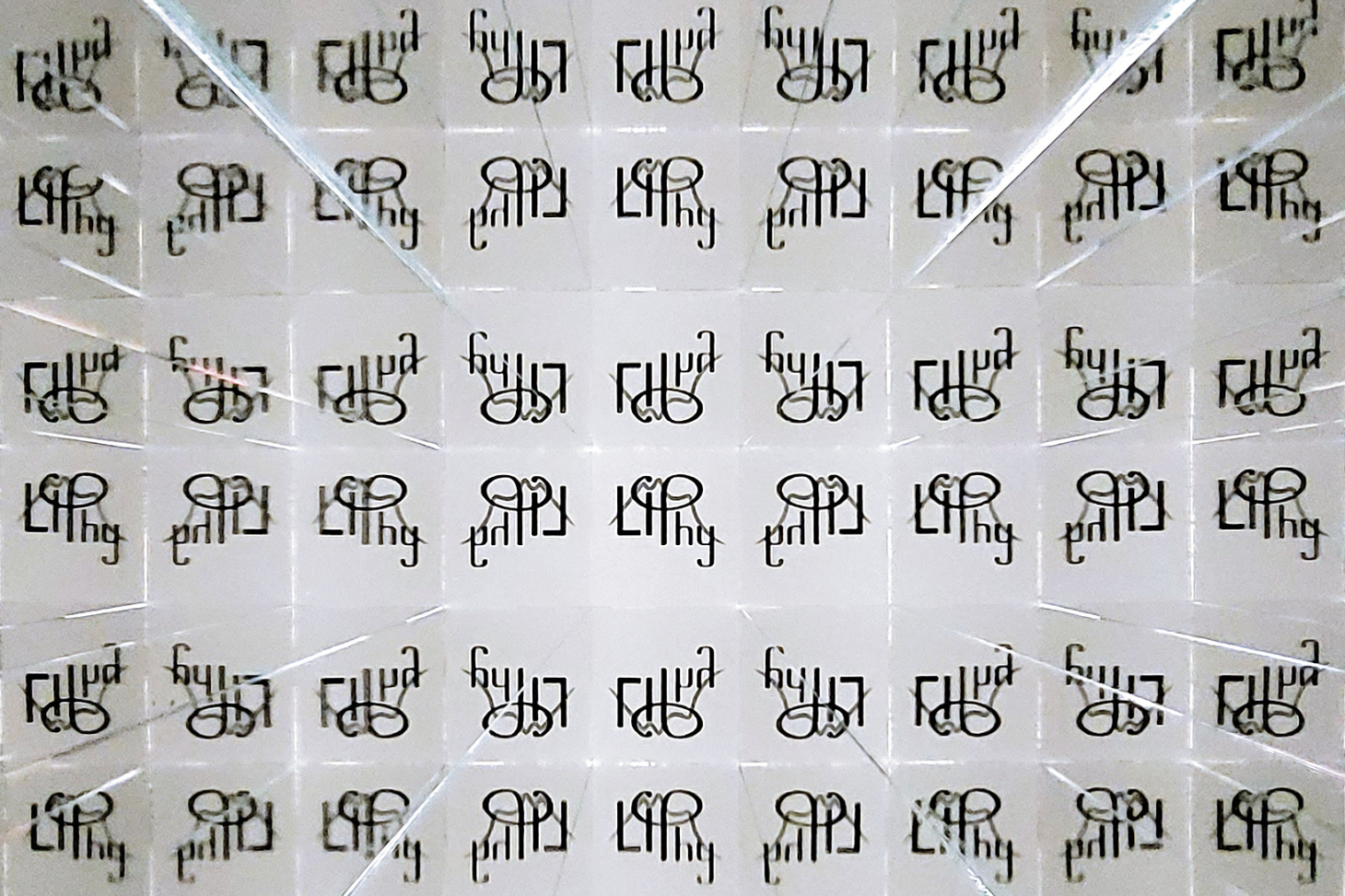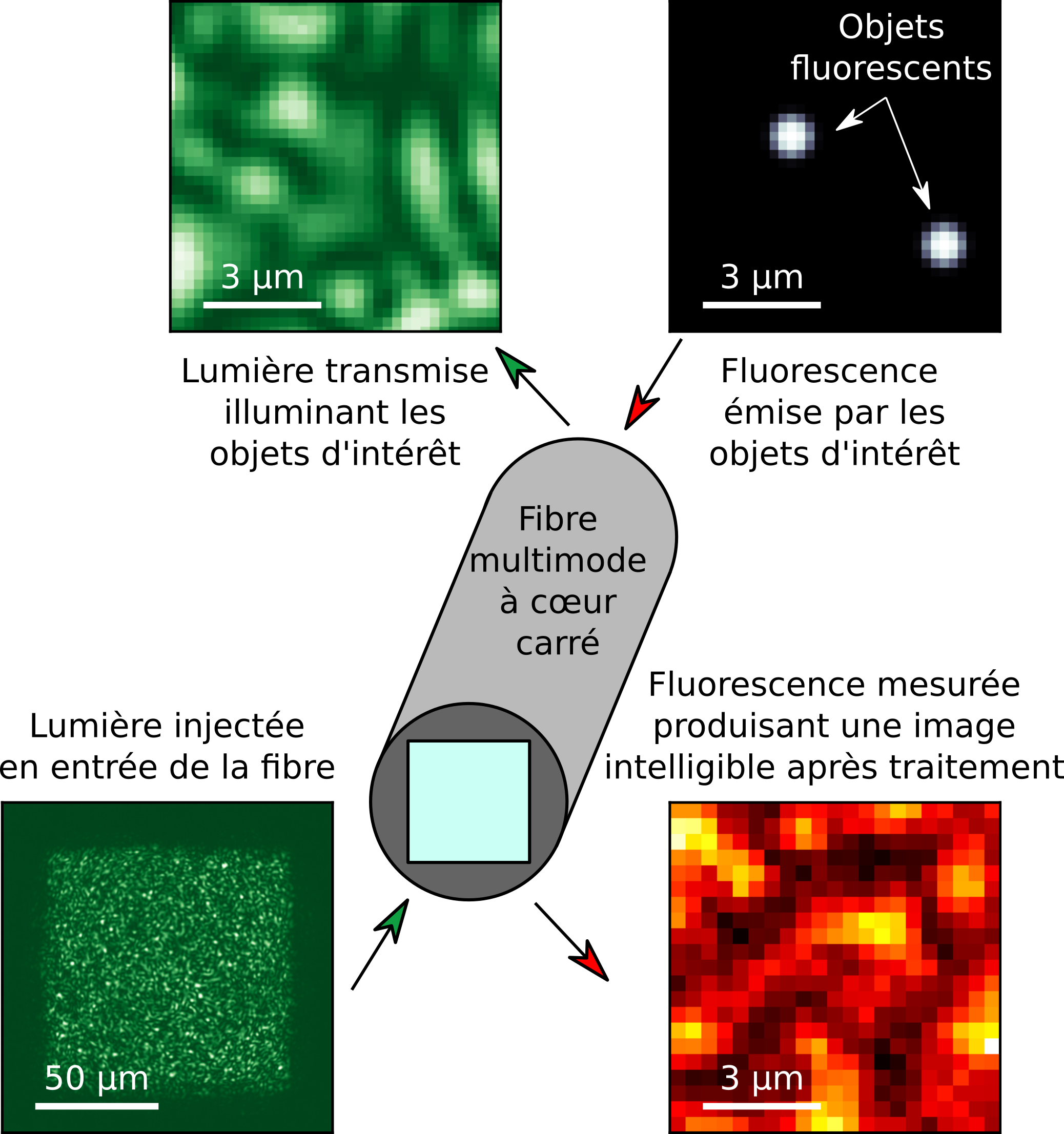- Share
- Share on Facebook
- Share on X
- Share on LinkedIn
Publication / Research
On June 27, 2023

The first kaleidoscope was made in the early 1800s by Sir David Brewster, who was seduced by the beauty of the patterns generated, both symmetrical and very complex. In a recent study carried out within the Grenoble Interdisciplinary Physics Laboratory (LIPhy - CNRS/UGA) and published in PNAS, scientists demonstrate that the kaleidoscopic effect, beyond its artistic function, can be usefully exploited by scientists. working with fiber optics.
The development of fiber optic endoscopes is motivated by certain biomedical applications such as brain imaging. Multimode fibers, whose size is typically comparable to that of a human hair, are excellent candidates for minimizing the invasiveness of these procedures. However, the propagation of light in multimode fibers is very complex. Indeed, in this type of fiber, the light propagates in an unpredictable way, producing patterns that are difficult to interpret at the fiber outlet. Techniques currently exist to reconstruct images from such patterns, but these techniques are very sensitive to the deformations applied to the fiber, which strongly limits the possibilities of applications in biology.

In this study, LIPhy scientists demonstrate that it is possible to produce intelligible images with multimode fibers even when these are deformed. For this, they were inspired by the kaleidoscope of Sir David Brewster, and swapped the usual fibers, which have a circular heart, for fibers with a square heart. Indeed, the symmetry properties of these fibers generate a remarkable kaleidoscopic effect, which transports information in a robust way to deformations. They tested this method by reconstructing images of fluorescent micro-sources through the fiber, even as it was randomly distorted, thus reproducing the dynamic aspect of the disturbances that typically occur when studying living organisms. They thus demonstrated that, despite these disturbances, it is possible to reconstruct faithful images of these micro-sources through the fiber. This new technique thus promises to be promising for the development of miniature endoscopes for biomedical imaging.
References :
Speckle-correlation imaging through a kaleidoscopic multimode fiber
Dorian Bouchet, Antonio Miguel Caravaca-Aguirre, Guillaume Godefroy, Philippe Moreau, Irène Wang, Emmanuel Bossy. PNAS - Juin 2023. DOI
Date
- Share
- Share on Facebook
- Share on X
- Share on LinkedIn